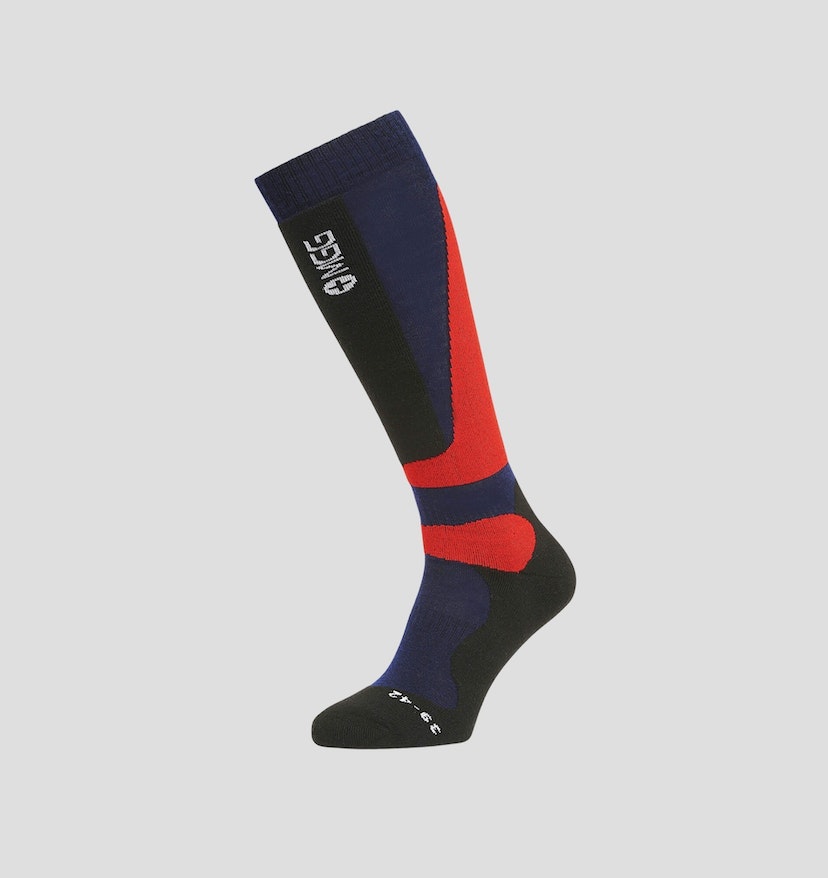
What's the difference between giant slalom and super g?
Both super g (also known as giant slalom) and super g are the most popular alpine events. They both require great speed and stability. Both events are different, but they also have some key differences.
Both giant slalom (also known as super g) and super g have the exact same goal. However, the former has more turns. The course in super g is longer and steeper banked than that of a slalom classic race.
What's the main difference between super and giant slaloms?
Super slalom skiers have to pass through a series of gates that are further apart (similar in design to a GS). The wider gates in super slalom allow skiers to reach higher speeds than they would be able to do in a slalom.
Skiers can crash more if they don't make good turns or take corners. As a result, skiers need to be able to navigate the super slalom course with incredible accuracy in order to get a good time.

Olympic super g is the latest and fastest technical discipline, with 36 athletes participating in PyeongChang. Matthias Mayer, an Austrian athlete, was the first person to win gold in this brand new event. He took it to the top step of the podium.
What's the Difference Between Super Slalom And Downhill?
Downhill is less technical, but has fewer turns. It's therefore easier for some people than others to win downhill races.
It's also more difficult to catch air in a downhill race because of the shorter distance between each gate, so downhill racers have to be more careful with their turns. It's because of this that the average downhill race is longer than a super slalom course.
What is the difference between super giant slalom and downhill?
The most significant difference between downhill and giant slalom racing is the power of downhill racers. This allows them to ski faster, compared to super giants slalom skiers who may ski at speeds as high as 100 kph.
Additionally, downhill skiers are capable of reaching speeds in excess of 50 mph. Super giant slalom athletes can reach speeds around 20 mph. This doesn't really matter, as long as your race is completed with the best possible time.

What is the difference in downhill and super G?
The answer to the question whether super g or downhill is more difficult depends on your personal preference. You can choose downhill racing if you want a technical challenge. If you prefer the speed and competition of super slalom, then you will love it!
The super giant slalom, the fastest of all four technical disciplines, is also the most difficult. The sport is more challenging and requires greater strength and accuracy. However, it still offers a thrilling way to experience skiing. This is an excellent option for anyone who has never attempted downhill skiing, or wants to test their skills in another discipline of competitive ski racing.
FAQ
Where can I find cheap accommodation when traveling abroad?
There are many options for affordable accommodation, including hostels and hotels, guest houses, and bed-&-breakfasts.
Hostels are inexpensive and offer dorm-style rooms where guests share bathrooms and living areas.
Hotels are often located in tourist areas. They offer private rooms with en-suite bathrooms.
Hostels have similar features to guesthouses, but they are more spacious and can accommodate fewer guests.
Budget-conscious travelers love bed and breakfasts. Guests are able to stay in private homes, and they can enjoy a full-service breakfast.
How can I travel light?
There is no right or wrong way to pack for a trip. But here are a few tips to help you choose what to bring along.
-
Only bring what you truly need.
-
Pack only what you'll actually wear.
-
Avoid buying too many things.
-
Be sure to have plenty of space in your suitcase
-
Always make sure you have everything you need.
-
Take advantage of free storage facilities.
-
Use reusable water bottles instead of buying bottled water.
-
You can carry a backpack rather than a suitcase.
-
Walk or cycle whenever possible instead of using public transport.
-
Select the right bag size
-
Avoid carrying heavy objects.
-
Be prepared for all eventualities
-
Leave nothing behind.
Are you concerned about what you might lose when you travel?
Yes, I often forget stuff. This happens most often when I'm on a brief trip. But I have everything with I, so I never run low.
For instance, I always carry my passport with me. And I always check whether I have enough money when I buy tickets.
My phone charger is always with me. A small bag is also handy for storing other items.
Statistics
- They're also likely to offer babysitting services, in case you'd like to have dinner one night after 7 p.m. (travelandleisure.com)
- According to Maori legends, this park holds 14 fjords that were all carved by a giant stonemason with an adze. (busytourist.com)
- That's an 18% jump from 2019, the previous record year. (travelandleisure.com)
- Alcoholic beverages with more than 24% but not more than 70% alcohol are limited in checked bags to 5 liters (1.3 gallons) per passenger and must be in unopened retail packaging. (tsa.gov)
- You can use compression sacs or cubes to reduce the volume of your clothes by up to 80%—this is especially convenient for bulky items such as sweaters and jackets. (eaglecreek.com)
External Links
How To
How to plan for your next holiday
Planning a trip requires many things, such as booking flights and hotels, car rentals, activities, and so on. It includes important considerations such a budget, destination, weather forecast, time frame, etc.
These points are essential to keep in mind when you plan your next vacation.
We have prepared a step-by, step guide to help with your next vacation planning. Based on customer feedback and our own experience, this guide was created. We hope that you will find the following guide useful in planning your next vacation.
Steps:
-
Plan your Budget - Planning your budget is one of the most important steps in preparing for a trip. Before you start to think about where to go or what to do, it is important to determine how much money you have available for your trip. If you don’t have sufficient money, you may have to cancel your travel plans.
-
Book Your Flights - After determining your budget, the first thing you should do is book your tickets. Be sure to get the lowest price flight deal. You should also check to see if any airlines offer special deals during specific seasons. These deals could save you a lot of money.
-
You can choose your destination - Once you have purchased your ticket, you need to decide where you would like to go. Multiple factors play into the decision of where to go, climate (when you can visit), culture (how friendly they are) and cost (how expensive it is).
-
Find Accommodations. There are many options for accommodation, from budget hostels to luxurious suites. Choosing the right type of accommodation depends on your needs and preferences. A hotel is not the best choice if you want to be close to the city centre. If you prefer quiet, peaceful places, a homestay may be the best option.
-
Select Activities & Attractions - After selecting your accommodation, now is the time to select the activities and attractions you wish to include in your itinerary. You have the option to choose a handful of activities or add more depending on the length and duration of your stay.
-
Select Activities and Attractions - Now it's time for you to plan your itinerary. You should follow a set schedule to get the most out of your trip. But, it's possible to enjoy your trip more if your schedule is flexible.
-
Create Itinerary - Creating an itinerary includes all the information about your trip. Write down all details about your trip, including flights, accommodation, activities, and restaurants.
-
Research Online – Make sure you research everything before you leave on your trip. To find out what other travellers think about different destinations, read reviews and testimonials. This will enable you to plan accordingly.
-
Don't Overpack - This is one of the most common mistakes people make when packing. Do not bring more than three sets of clothes. You should bring clothing that suits the conditions.
-
Be prepared. Before you leave for your trip, make sure that everything is in order. You don't want your trip to be ruined by searching for vital documents while you're in transit.